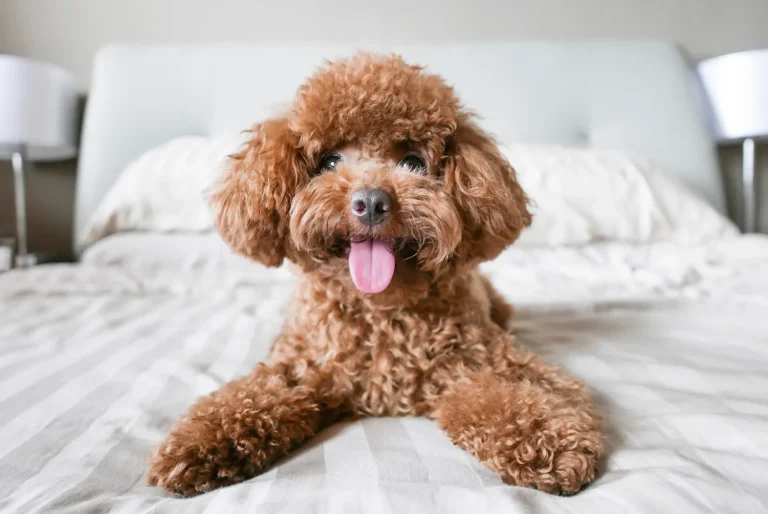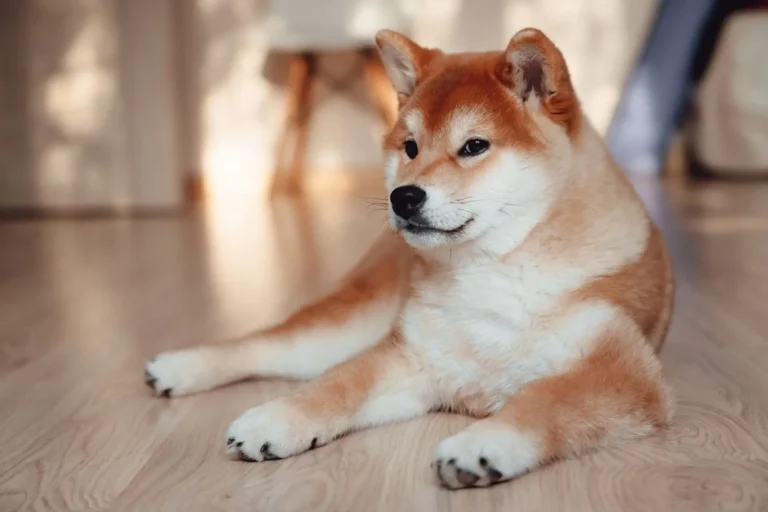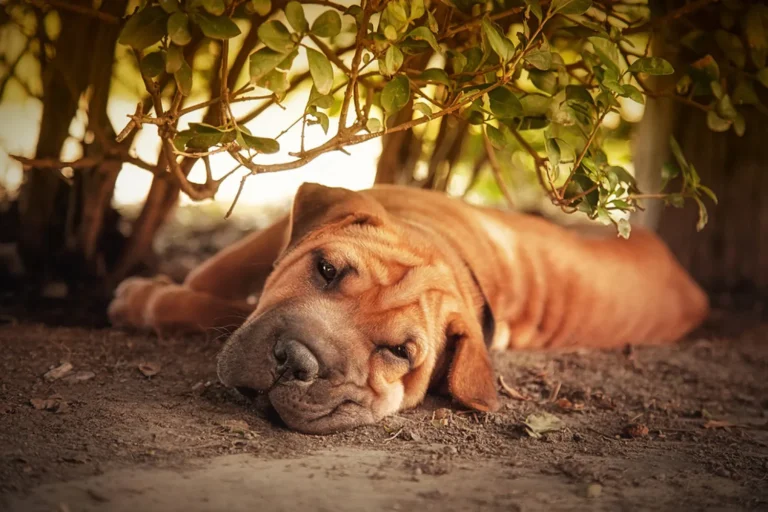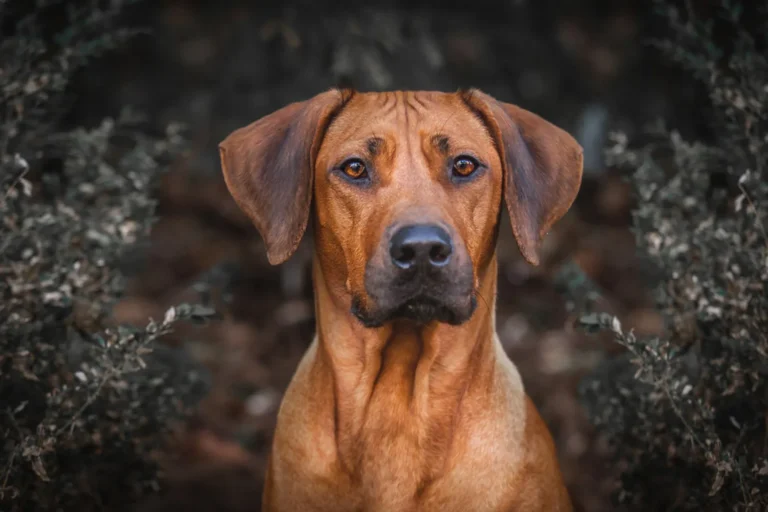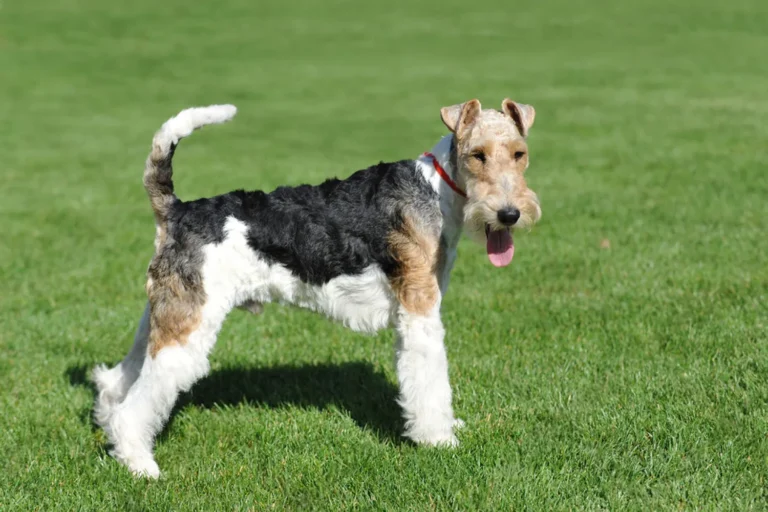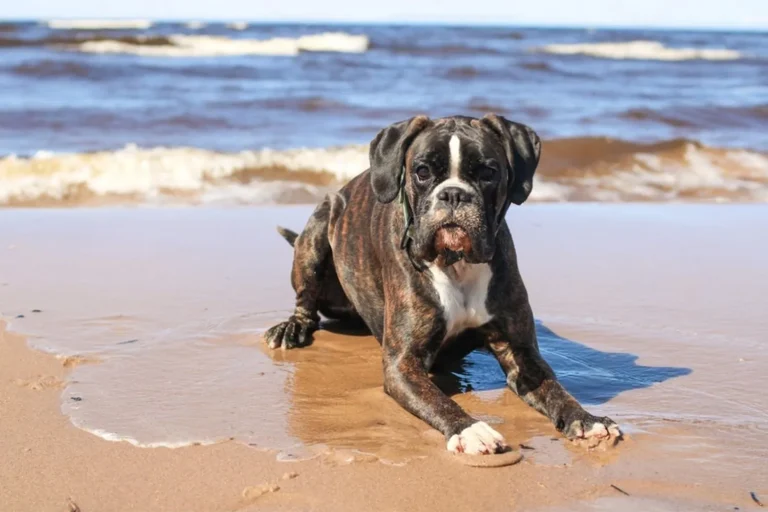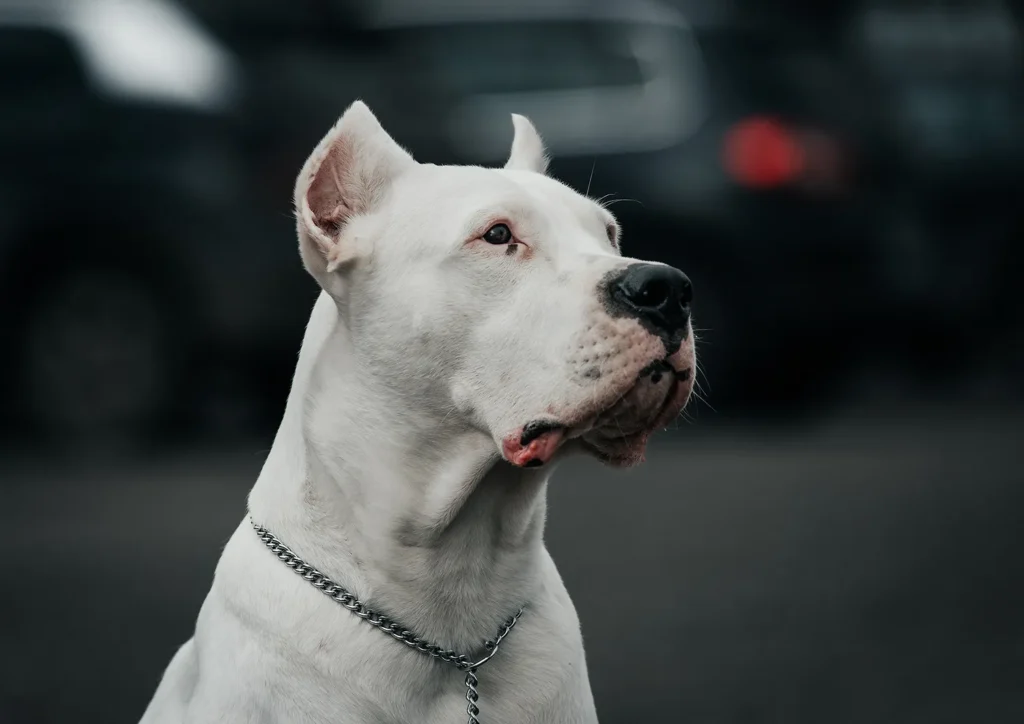
Dogo Argentinos make steadfast partners for folks whose work truly depends on a canine teammate people who need stamina, focus, and courage at their side. I once met a ranch hand with a Dogo who moved like a shadow, calm until it was time to work, then all business.
If you’re wondering whether this breed is a match for you, start with your lifestyle: daily exercise, consistent training, and clear boundaries are non negotiable. You’ll get a big, affectionate protector in return. In this guide, I’ll share practical tips and real life examples to help you decide with confidence.
History and Origin of the Dogo Argentino
The Dogo Argentino’s story starts in 1920s Argentina, where a hunter named Antonio Nores Martinez set out to create the ultimate big game companion. He needed a dog that could push through tough brush, track silently, and face down wild boar or puma without flinching yet still come home and be a steady, trustworthy family watchdog. His foundation was the now extinct Cordoba Fighting Dog, a powerful animal with tremendous grit but too much dog to dog aggression for pack hunts. Through careful, selective breeding, he dialed down that dog directed hostility so the dogs could work together in a coordinated pack.
To build the Dogo’s “recipe,” Martinez blended in traits from several breeds. The Boxer contributed athleticism and a level head, while the American Pit Bull Terrier added tenacity and drive. The Bulldog brought strength, the Mastiff added bulk and presence, the Great Dane offered height and a ground eating stride, and the Irish Wolfhound lent endurance and hunting instinct. The result was a strong, agile, fearless dog that could handle big game and still be loyal and affectionate enough to live as a companion and guardian. Many Dogos are solid white, which made them easier for hunters to see in the field handy when excitement is high and the brush is dense. I met a Dogo at a training field day who would switch from laser focused tracking to leaning his whole weight into my legs for a cuddle the moment the work ended. That “on off” switch is very much part of their design.
Because the breed was developed for a specific purpose and kept relatively close to its roots, Dogos remained rare for decades. They reached the United States in the 1970s, brought over by hunters and working dog enthusiasts who admired their courage and stamina. Recognition came slowly on the show side, and the American Kennel Club officially recognized the Dogo Argentino in 2020. I remember watching that announcement and thinking of all the small, dedicated breeders who had been preserving the breed’s working heart for years it felt like a big nod to their efforts.
Of course, strength and fearlessness can attract the wrong kind of attention. Unfortunately, some Dogos are still exploited in illegal fighting, and, like Pit Bulls, they’re banned or restricted in certain regions due to a perceived aggressive nature. If you’re considering this breed, it’s smart to check your local laws and housing or insurance rules first. Understanding their history helps you set them up for success: early socialization, consistent training, and plenty of structured exercise go a long way. A breeder I spoke with in California told me she treats every young Dogo like a future athlete clear boundaries, mental work, and daily outlets for their energy. Do that, and you’ll see why the Dogo Argentino was created in the first place: a devoted, capable partner with a brave heart and a surprisingly soft side at home.
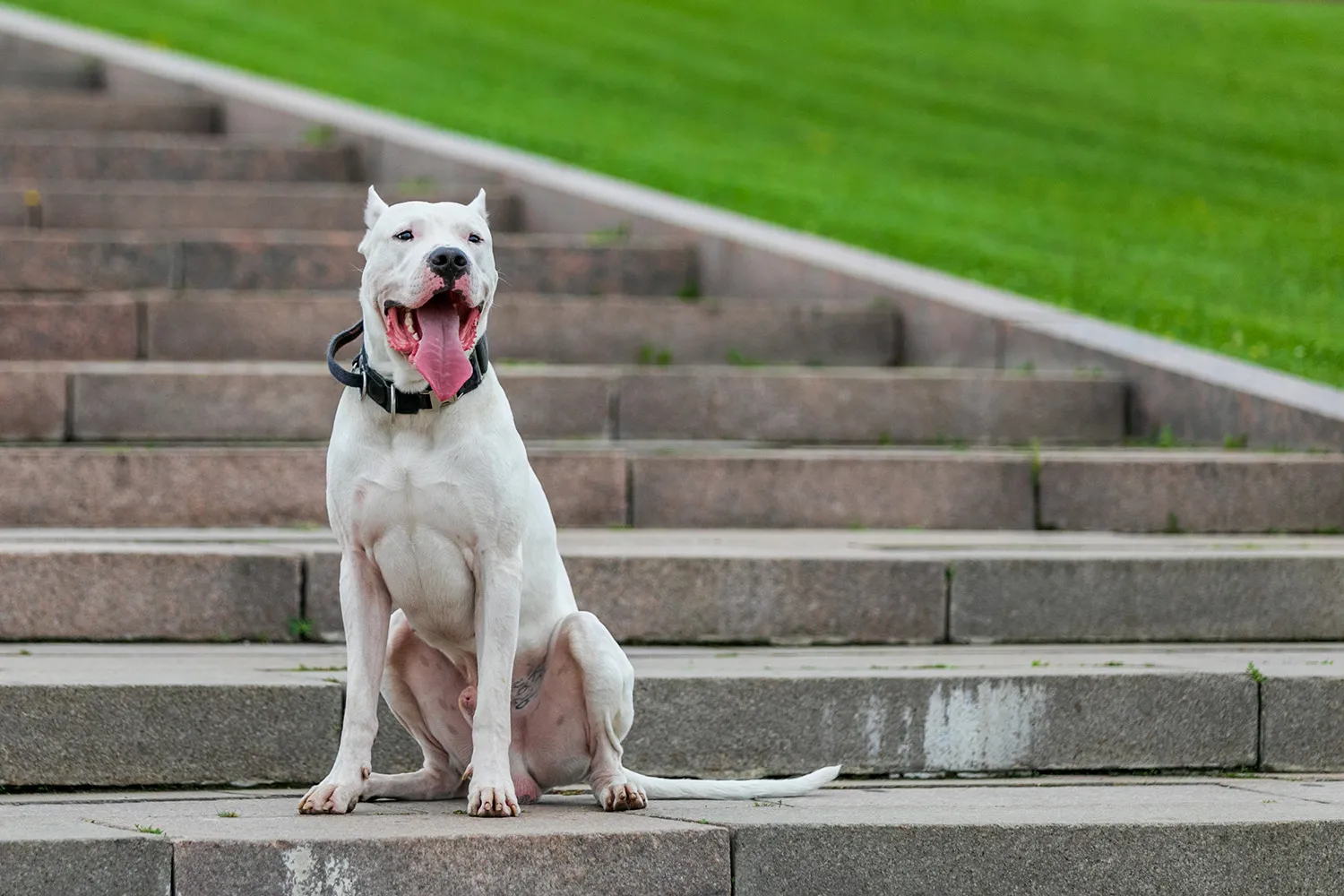
What Is a Dogo Argentino?
The Dogo Argentino is a large, muscular sporting breed from no surprise Argentina. They’re striking to look at: a pure white coat that shows off every ripple of muscle, sometimes with a single black spot on the head like a pirate patch. I first met one at a search and rescue demo, and honestly, it looked like a marble statue that suddenly decided to move. Pro tip from that handler: a dab of dog safe sunscreen on the nose can be smart on sunny days.
Dogos are built for serious work, and you’ll see them in search and rescue, police, and military roles. Originally developed for big game hunting, they bring courage, stamina, and a powerful nose. With that drive comes responsibility consistent training, early socialization, and plenty of exercise. I learned the hard way that a bored Dogo can “redecorate” a living room in minutes, so I rotate puzzle toys and scent games to keep minds busy.
They’re also quite rare, so finding a reputable breeder can take time. Start with national breed clubs and working dog networks, and be ready to travel or join a waitlist. Ask about health testing hips and a hearing test are musts for this white coated breed and check local laws, since some areas have restrictions. The coat is easy care, but the dog underneath is powerful and devoted, best suited to experienced owners who are all in.
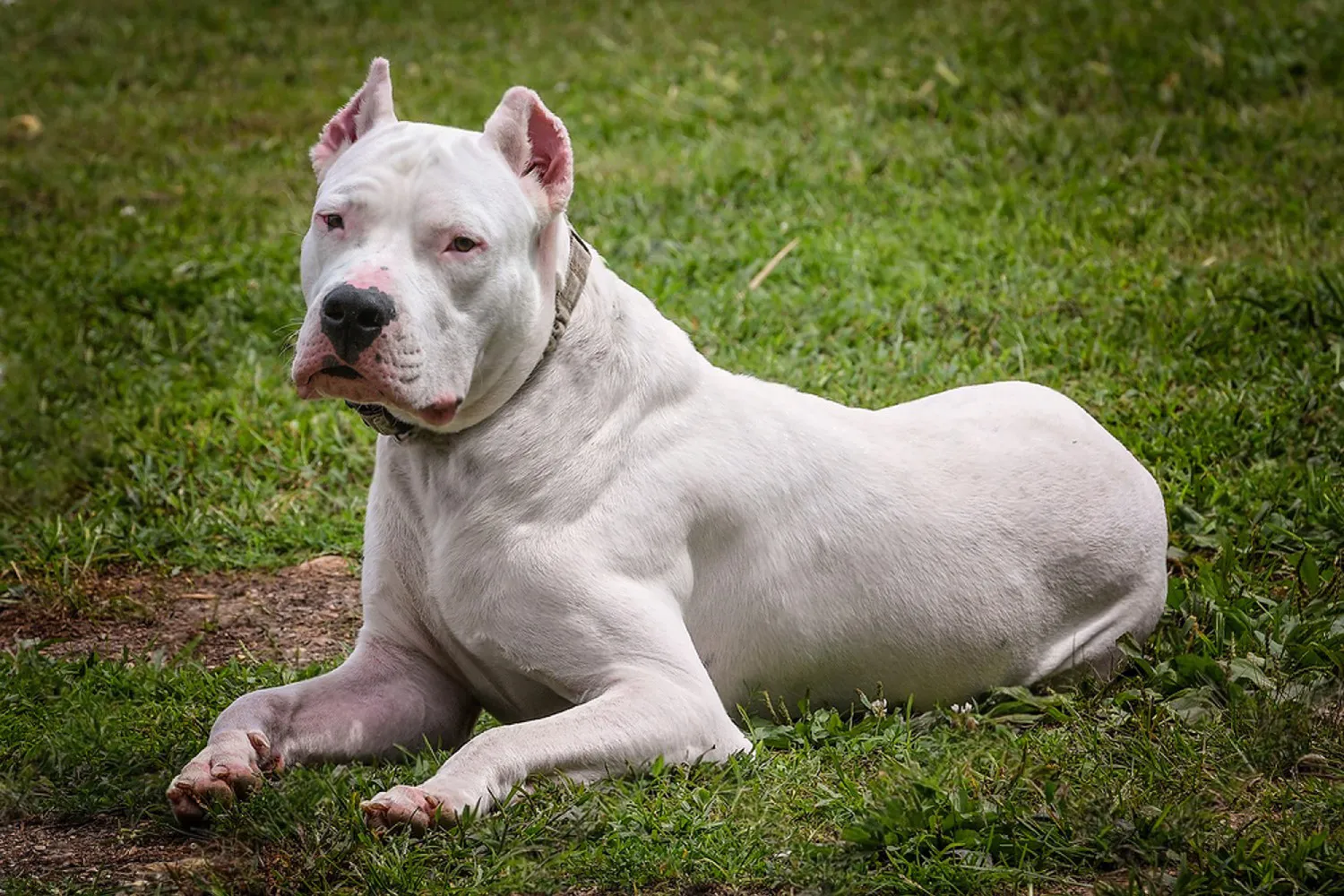
Who Is a Dogo Argentino Best For?
If you’re an experienced dog owner who enjoys training, structure, and an active lifestyle, the Dogo Argentino can be a remarkable partner. This is a powerful, athletic breed with a serious engine and a serious mind. Without consistent guidance and early socialization, they can get unruly fast. I remember pet sitting a young Dogo named Luna for a weekend. By noon on day one, it was crystal clear: a brisk walk wasn’t going to cut it. She needed a run, obedience work, and puzzle toys before she settled in for a nap and even then, she kept one eye on the door in case adventure walked by.
Homes with small dogs, cats, rabbits, or other small pets are generally not a match for this breed. The Dogo Argentino’s hunting background comes with a strong prey drive, and they’re prone to chase rabbits, squirrels, and yes, sometimes smaller housemates. I’ve seen a Dogo fixate on a fast moving toy like it was game in the brush. That instinct doesn’t just switch off in a living room. Families with very young children should also be cautious. These dogs are big, bouncy, and deeply determined; even a friendly puppy can bowl over a toddler by accident. If you have older, dog savvy kids and a solid management routine, it can work, but it’s not the typical “first family dog” scenario.
This breed isn’t known for being naturally welcoming to other dogs. If you’re set on a Dogo and already have dogs at home, starting with a well bred puppy gives you the best chance to shape manners early, but there are no guarantees. Puppy kindergarten is a must think calm neutrality training, not just zoomy playtime. A trainer I know in California likes to pair short agility foundations with place work, so the puppy learns to settle after excitement. Have a plan in case cohabitation doesn’t pan out: baby gates, separate feeding, crate and rotate, and muzzle conditioning for safety. It sounds intense, but with a breed this strong, prevention is kindness.
For hunters, the Dogo Argentino can be a dream teammate. They were bred to take on formidable game like wild boar, and it shows in their grit and focus. I watched one work a field with a seasoned handler the dog’s head was up, nose cutting the wind, checking in without losing drive. That’s the balance you want: power on tap, manners under pressure. They can also thrive with handlers in demanding fields like police work, military roles, or search and rescue. Their athleticism, composure, and loyalty can shine when there’s a clear job and a steady, confident leader.
Daily life with a Dogo means movement real movement. Plan on long walks, steady runs, and structured training sessions. Dog sports like obedience and agility are fantastic outlets; add tracking or nose work and you’ll see that brain light up. I like a flirt pole warm up, ten minutes of focused heelwork, then a decompression walk. It turns that big engine into something beautifully manageable. Secure fencing, reliable recall training, and a predictable routine aren’t optional; they’re the foundation of a safe, happy life with this breed.
Bottom line: the Dogo Argentino is best for experienced owners who appreciate intensity and are ready to put in the work. If you want a loyal, driven companion with the heart to go all day and the brain to follow your lead, this might be your dog. If you’re hoping for an easygoing housemate who blends seamlessly into a multi pet, small child household, it’s wise to look elsewhere.
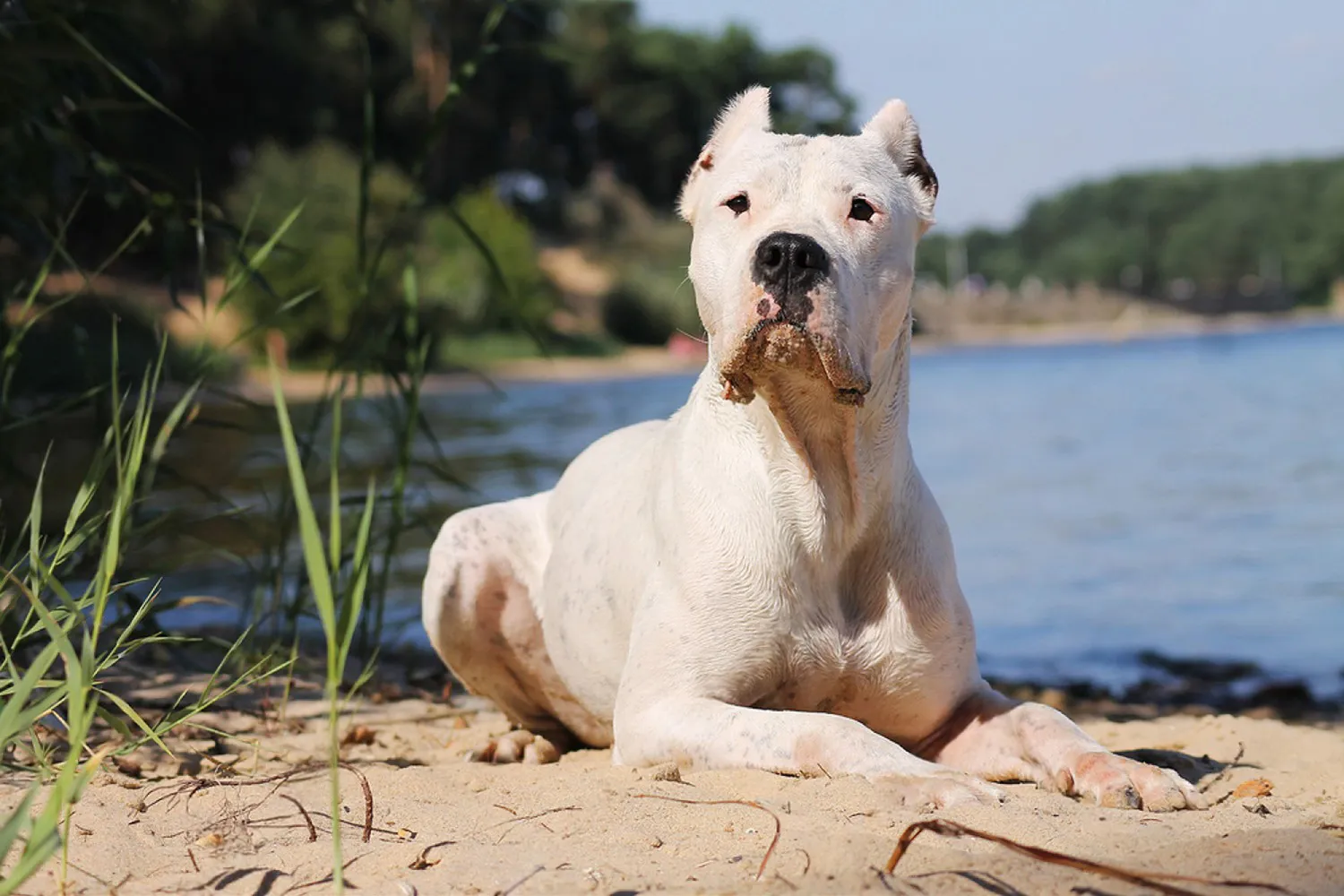
Dogo Argentino Grooming & Shedding
That sleek, short coat is one of the joys of living with a Dogo Argentino low fuss, easy to keep tidy, and it looks sharp when it’s clean. I give a good once over with a rubber curry brush or grooming mitt about once a week. Because they’re big, it takes a few extra minutes to cover all that real estate, but the actual coat care is simple: quick strokes to lift loose hair and a soft cloth wipe to finish. It’s also a great time to check skin, ears, and nails two birds, one grooming session.
Baths can be spaced out every few months, or sooner if your dog decides to decorate themselves in mud. With that bright white coat, every grass stain and puddle splash shows. I keep a damp microfiber towel by the door for post walk wipe downs; it buys me weeks between full baths and keeps that coat looking camera ready. Use a gentle shampoo and rinse thoroughly overbathing can dry their skin.
Now, about the shedding: yes, even short hair adds up. If you own black pants, consider a lint roller your new best friend. My friend’s Dogo, Luna, could leave a constellation of white hairs on a charcoal couch in a single nap. Regular weekly brushing helps a ton, and during seasonal shifts I’ll brush an extra day or two to stay ahead of it. A quick vacuum routine, a washable throw on the favorite chair, and you’re golden. Bonus tip: a little paw balm and monthly nail trims keep those big feet from clicking down the hallway like tap shoes.
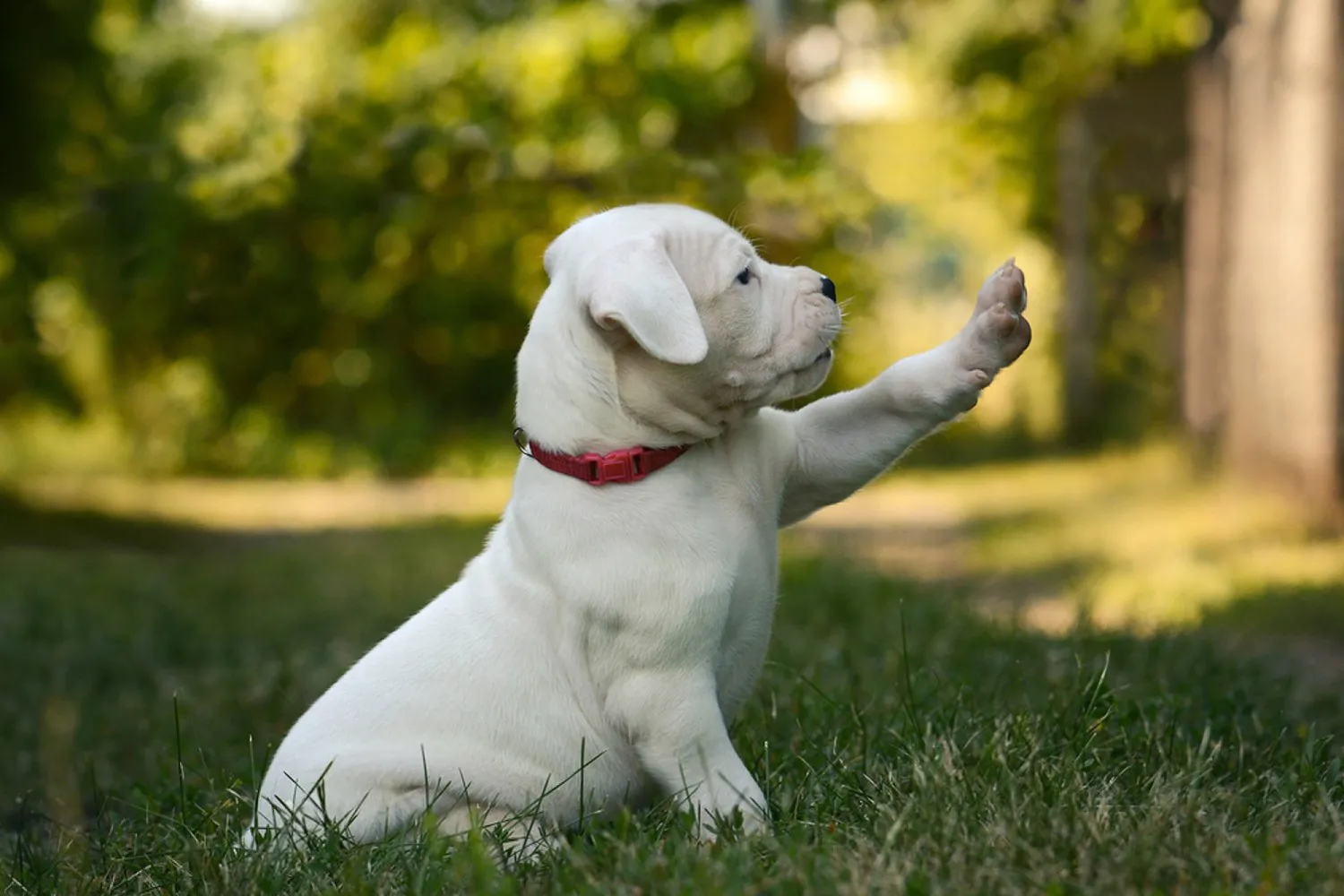
Do Dogo Argentinos Bark a Lot?
Short answer: not usually. Most Dogo Argentinos are pretty measured about their voices. They’ll save their bark for a purpose usually to alert you if someone’s at the door or something feels off outside. My friend’s Dogo, Luna, is silent all day, then gives one deep “ahem” when the delivery truck rolls up. It’s not yappy, just… informative.
If your Dogo does start barking more than you’d like, it’s often a sign they need more to do, both physically and mentally. These dogs are athletic and smart, and boredom can make any dog chatty. On days I’ve dog sat a Dogo, a long morning walk plus a late afternoon game of fetch worked wonders. Toss in some brain work snuffle mats, scent games, puzzle feeders and you’ll see the volume dial go down.
Training helps too. I like to teach a “quiet” cue by rewarding the split second of silence after a bark, and I make a point of praising calm behavior before the noise starts. Don’t shout back that’s just a duet. Instead, manage triggers: close the blinds if the window sets them off, turn on some background noise, and practice calm greetings for visitors. And start early if you can; a habit is much easier to prevent than to fix.
Bottom line: a well exercised, mentally engaged Dogo Argentino tends to be a considerate neighbor, only sounding off when there’s a good reason.
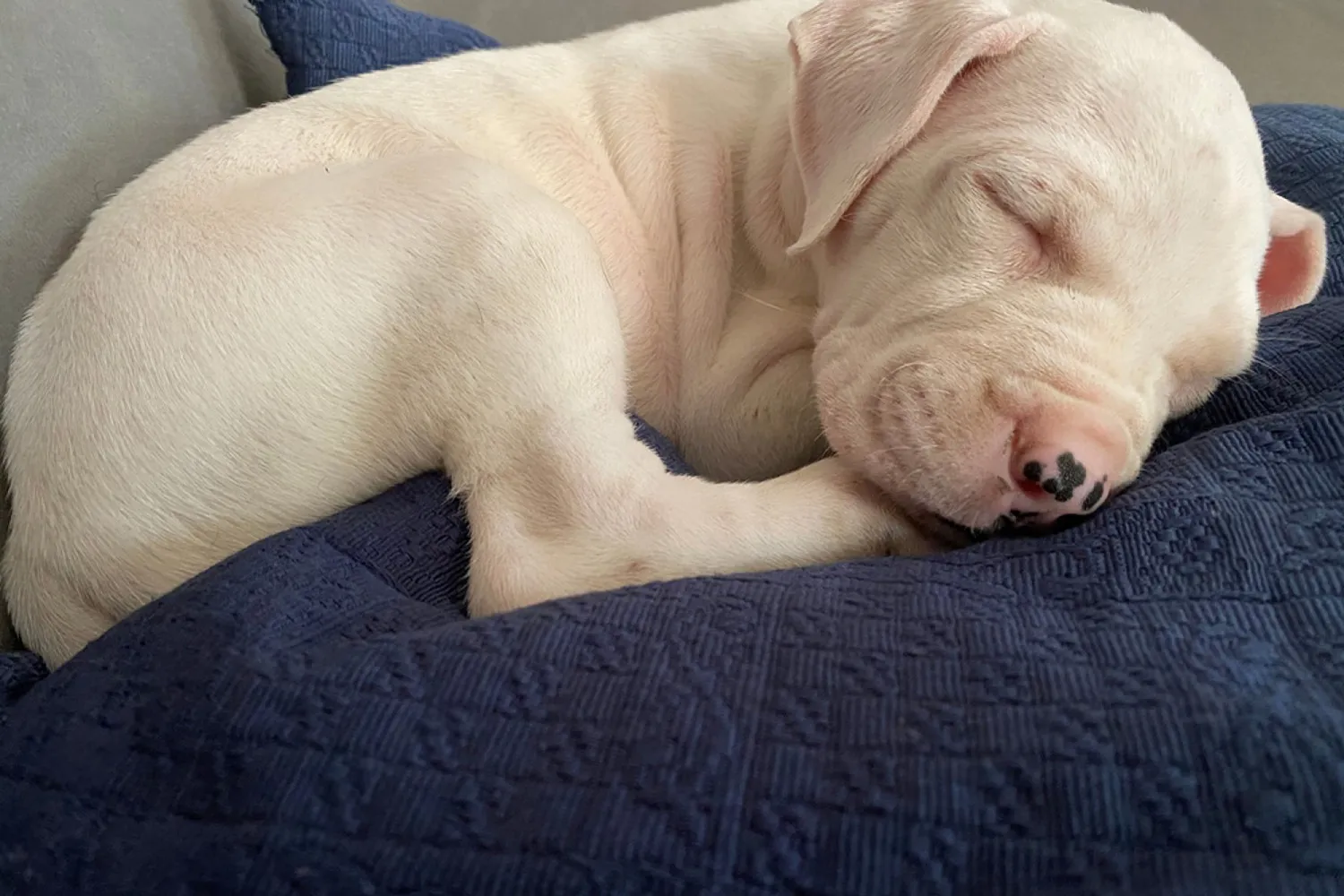
What is the average weight and height of a Dogo Argentino?
The Dogo Argentino is definitely on the larger side. Most stand between 58 and 68 cm at the shoulder (about 23-27 inches) and typically weigh 36 to 45 kg (around 80-100 pounds). Males often sit toward the upper end of those ranges, while females can be a bit lighter. My friend’s Dogo, Luna, is right in the sweet spot at 63 cm and about 41 kg and yes, she still tries to climb into your lap like a chihuahua.
https://en.wikipedia.org/wiki/Dogo_Argentino
If you’re measuring at home, put your dog against a wall and use a book at the withers (that top shoulder point). For weight, I do the bathroom scale trick: weigh yourself, then hold your dog and subtract. Don’t stress if a young Dogo looks lanky; they usually reach near full height by 12-18 months and fill out until around two years. Because they’re powerful, invest in a sturdy harness and a strong leash, and go easy on high impact jumping while those joints are still developing.
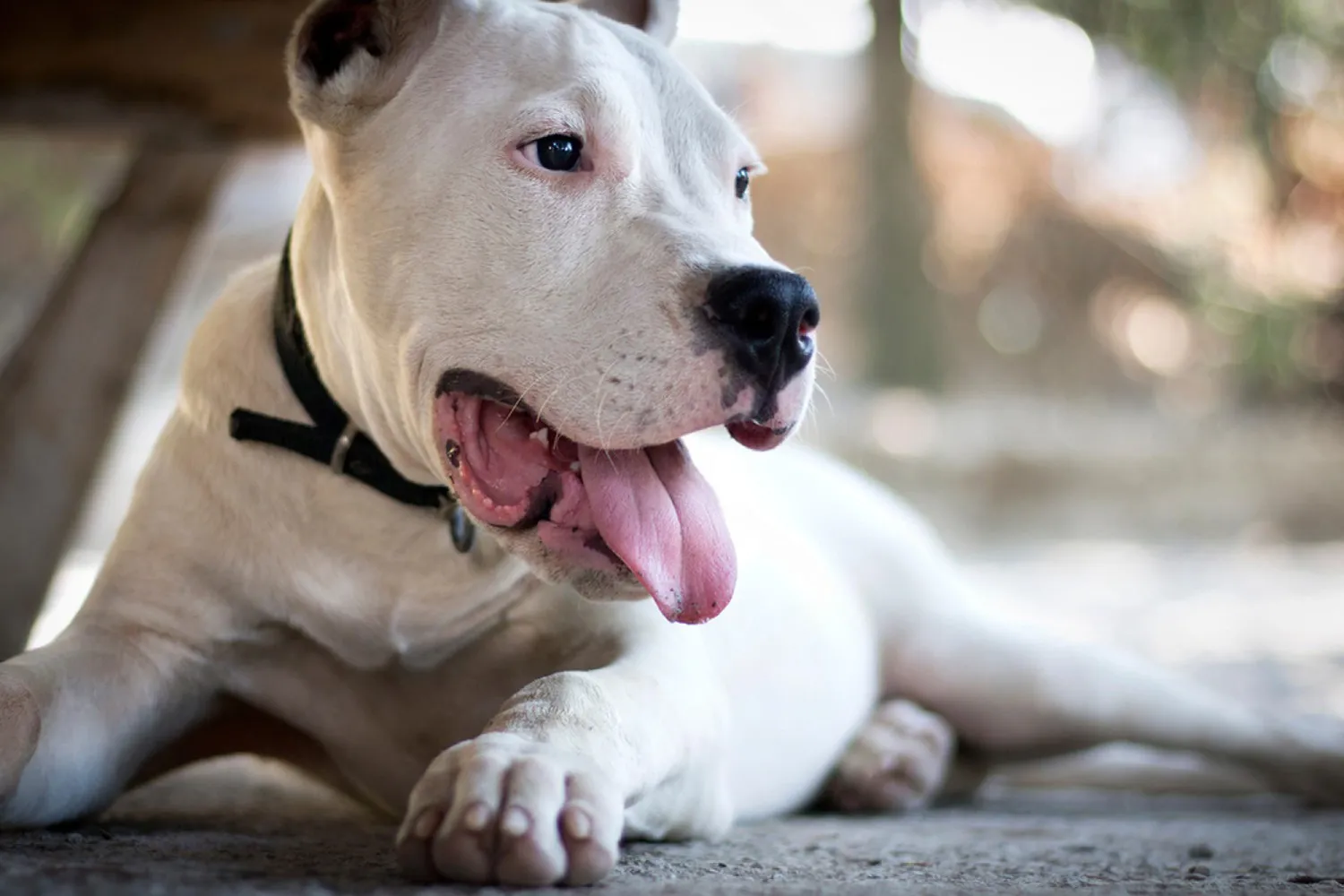
Are Dogo Argentinos easy to train?
Short answer: not usually for first time owners. Dogos are smart, strong willed, and physically powerful, which can make training a handful if you’re new to the game. I remember walking a friend’s Dogo as a teen and thinking, “If he decides we’re going left, we’re going left.” That kind of strength means you’ll want to get ahead of habits early.
Start training and socializing as soon as you bring your Dogo home. Think calm introductions to new people, dogs, places, and sounds, paired with lots of rewards. Keep sessions short, upbeat, and consistent. A firm, confident approach is important but firm doesn’t mean forceful. Harsh corrections or rough handling tend to backfire with this breed, stirring up resistance or even aggression. Instead, make good behavior pay off. I love using high value treats, a favorite tug toy, and enthusiastic praise. Teach impulse control early: sits before meals, waiting at doorways, and polite greetings. And don’t skip leash manners; with a dog this strong, loose leash walking is a must. A front clip harness helped me a lot with my friend’s Dogo while we practiced.
If you’re newer to training, teaming up with a reputable trainer who understands powerful working breeds is a smart call. These dogs thrive when they have a job obedience, scent games, or structured fetch can burn off that big engine. When a Dogo Argentino is guided with clear rules, positive reinforcement, and early socialization, they’re incredibly loyal, affectionate, and steady. Their history as working dogs proves they can be wonderfully disciplined give them the right start, and you’ll have a devoted partner for life.
How Do Dogo Argentinos Behave? Temperament and Personality
With their families, Dogo Argentinos are typically warm, loyal, and a little bit velcro. They bond hard and love being part of the daily action. At home, though, their protective side shows. They can be suspicious of unfamiliar people on their turf, not because they’re mean, but because guarding the house feels like their job. A friend’s Dogo, Luna, would curl into a puddle of sweetness on the couch, then quietly park herself between the front door and the kids when someone knocked. What helped most was structure: meeting visitors outside first, using a leash or baby gate, and teaching a “place” cue so she had something to do other than “patrol.” Calm greetings and lots of practice make a big difference.
Around other dogs and small animals, their hunting background comes through. Many Dogos aren’t social butterflies with other pets, and their prey drive can be intense. I don’t take this breed to dog parks; instead, I plan controlled, on leash parallel walks with steady dogs and keep play short and supervised. A solid fence (check those latches twice) and a firm “leave it” save everyone a lot of stress. If you’ve got cats, chickens, or pocket pets, assume strict management.
These dogs need serious exercise and mental work to shine. Think brisk daily outings, training sessions that challenge their brains, and structured games like scent work or “find it” around the house. I’ve seen a restless Dogo turn into a happy napper after 15 minutes of nose games and a few impulse control drills. Puzzle feeders, tug with rules, a flirt pole in the yard, and obedience practice keep them satisfied. Because of their energy and size, apartment living isn’t a good fit. They do best with space, routine, and an owner who enjoys training. If you love giving a smart, powerful dog a job, the Dogo’s loyalty and heart are pretty unforgettable.
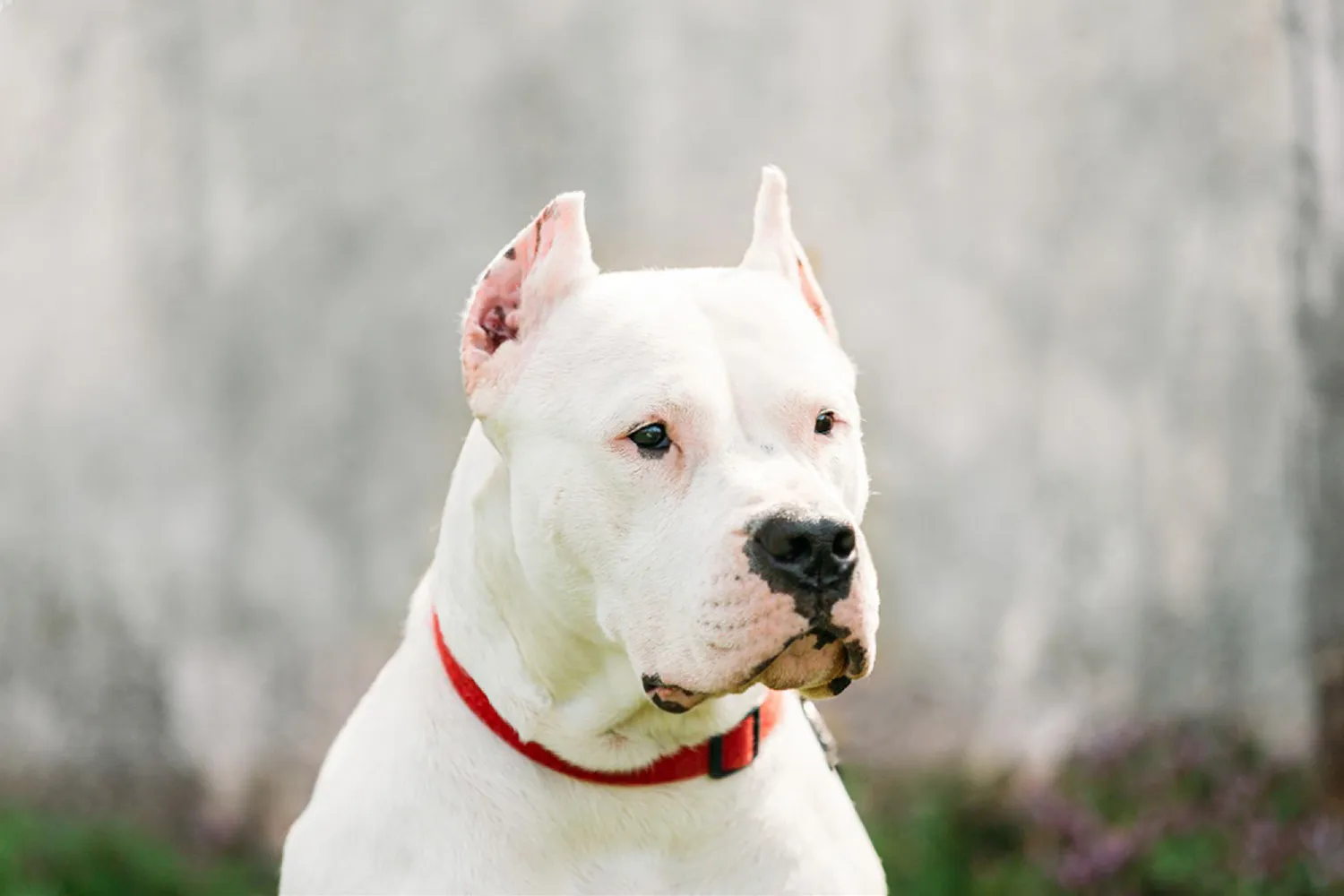
Common Health Issues in the Dogo Argentino
The Dogo Argentino is a sturdy, athletic breed, and most I’ve met have been wonderfully robust. Still, like every breed, there are a few health quirks worth knowing so you can stay a step ahead.
Deafness is the big one people talk about with Dogos. About 1 in 10 may be deaf in one or both ears, which sounds scary at first but is very manageable with the right approach. If you’re getting a puppy, ask for a BAER hearing test result it’s the gold standard. And if you do have a deaf or partially deaf Dogo, don’t panic. My friend’s Dogo learned hand signals in a snap and actually focused better than many hearing dogs. A vibration collar (not a shock collar) can be helpful for getting attention, and I always pair gestures with big, happy body language to keep communication clear and fun.
Hypothyroidism pops up in a lot of large breeds, and Dogos aren’t an exception. If your dog starts packing on pounds despite a normal diet, seems unusually tired, or has flaky skin and a dull coat, it’s worth asking your vet about a thyroid panel. The good news? If it’s hypothyroidism, it’s typically easy to manage with daily medication and regular blood checks. One of my seniors perked up dramatically within a few weeks of starting treatment coat gleaming, zoomies restored.
Keep an eye out for glaucoma, a serious eye condition that can lead to vision loss if it isn’t caught quickly. Watch for squinting, redness, cloudiness, or a suddenly “big” or painful looking eye those are same day vet problems. I like to have the vet do an eye pressure check during annual exams, and I don’t ignore subtle eye changes. Early detection really is everything here.
Laryngeal paralysis can affect breathing and bark quality. If you notice loud, raspy breathing, a hoarse bark, heat intolerance, or your dog tires easily on walks, flag it with your vet. Managing weight, using a harness instead of a neck collar, and avoiding exercise in the heat can help a lot. In some cases, surgery is an option. I learned to plan summer walks at dawn and keep a cooling mat handy simple changes that make a big difference.
And then there’s hip dysplasia, the classic large breed concern. It can lead to arthritis and mobility issues as they age. Choose a breeder who screens hips and offers OFA or PennHIP results. Day to day, keep your Dogo lean, build muscle with low impact exercise like swimming, and use rugs on slippery floors. I’m a fan of ramps for getting in and out of the car, and I start joint friendly habits early no marathon stair sessions for puppies, and controlled play instead of endless jumping. Ask your vet about joint supportive supplements and when they make sense.
A few closing tips from my toolbox: schedule regular vet checkups (twice yearly once they hit middle age), learn your dog’s “normal” so changes stand out, and consider pet insurance big dogs can mean big vet bills. Most Dogos live long, happy, action packed lives. With a little vigilance and a lot of love, you’ll be ready for whatever comes your way.
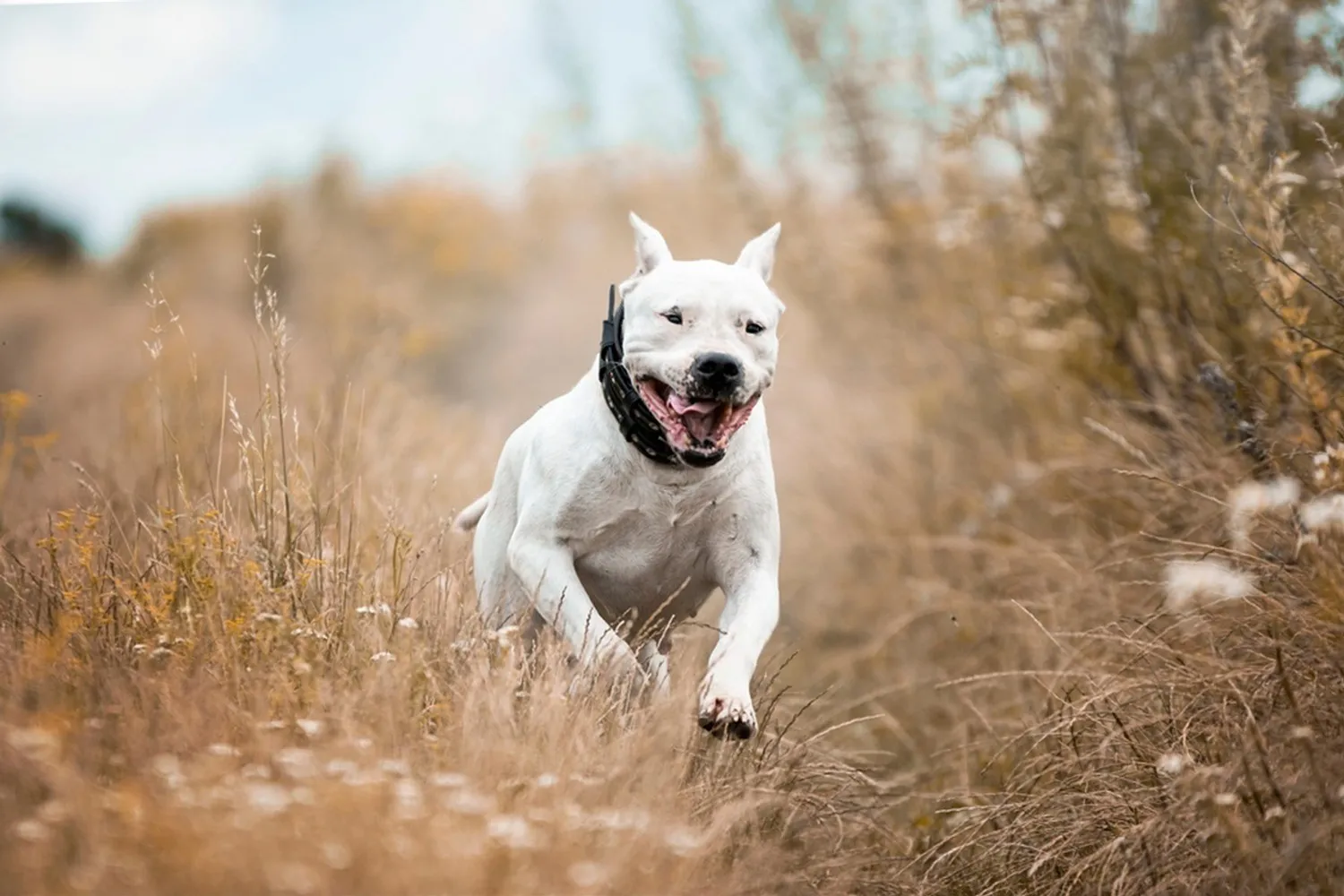
What Is the Lifespan of a Dogo Argentino?
Most Dogo Argentinos live somewhere between 9 and 15 years, with a lot of them settling comfortably in the middle of that range. I’ve known a big sweetheart named Bruno who hit 14 with a graying muzzle and a love for slow evening strolls, and another goofy boy, Max, who still acted like a puppy at 10. Genetics play a part, of course, but daily habits make a big difference too.
If you want to help your Dogo Argentino live a long, happy life, focus on the basics: keep them lean, give them good quality food, and make exercise a daily ritual. These dogs are athletic, so a steady routine of walks, play, and brain games goes a long way. I’ve found that puzzle toys after a brisk morning walk keep the wiggles at bay. Regular vet checkups are your best friend catching little problems early can add years. I also start joint support and dental care early; it’s much easier to maintain than to fix.
As they move into their senior years, adjust the pace. Softer beds, shorter but more frequent walks, and a little extra patience go a long way. My tip: teach “easy” and “wait” while they’re young it makes senior life smoother when stairs and slick floors get tricky. With sensible care and lots of love, it’s entirely possible for a Dogo Argentino to enjoy a long, tail thumping life well into those teens.

How Much Should a Dogo Argentino Eat?
A Dogo Argentino is a big, athletic dog with a big, athletic appetite, so plan on two substantial meals a day. Morning and evening works well for most families. When I was fostering a Dogo named Luna, splitting her food into two sit down meals kept her energy steady and helped prevent that “I’m starving!” scavenger mode in the afternoon.
How much goes into each bowl depends on your dog’s age, activity level, and the type of food you’re using. A working or super active Dogo will burn through calories faster than a couch companion. I like to use the “feel, don’t guess” approach: you should be able to feel ribs without digging, see a gentle waist from above, and notice a slight tummy tuck from the side. If the ribs vanish under a layer of fluff, I trim the portions a little; if the hips start to look sharp, I nudge them up. I also budget treats into the day if we’ve done a big training session, dinner gets a smidge lighter. Slow feeder bowls are great for enthusiastic eaters, and I avoid heavy exercise right before or right after meals to keep tummies happy.
If you’re unsure about amounts, a quick chat with your veterinarian or a canine nutritionist is worth its weight in kibble. They can tailor a plan so you’re not over or underfeeding. For puppies, the schedule and portions are different smaller, more frequent meals so definitely get guidance as they grow. One last tip: keep notes for a couple of weeks. When I jotted down Luna’s meals, weight, and activity, it made dialing in her perfect portion much easier.
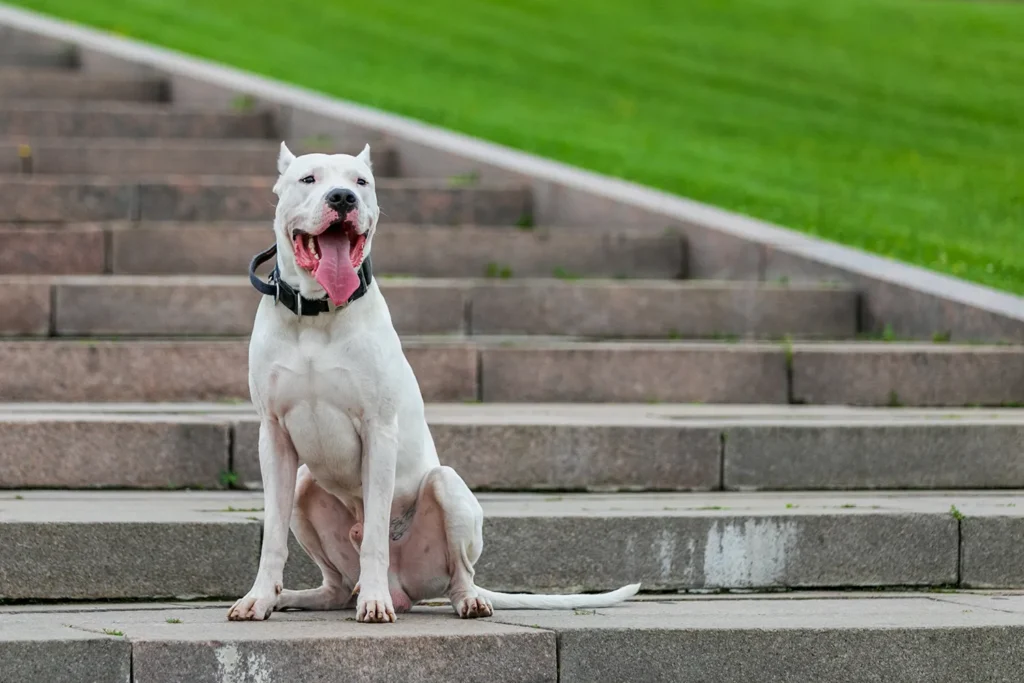
Dogo Argentino FAQs
What is the bite force of a Dogo Argentino?
The Dogo Argentino is famous for having one of the most powerful bites in the dog world, measured at about 351 kilograms of force per metre squared. That kind of strength comes from their original purpose big game hunting so a full force bite can be extremely painful and cause serious injury. Of course, there’s never a good reason to “test” a dog’s bite. I always channel that jaw power into healthy outlets: tough chew toys, structured tug games with clear rules, and solid training. A trainer once showed me how calm, confident handling kept a Dogo’s powerhouse jaws busy on a rubber toy instead of on furniture my coffee table thanked me later.
How do you tell if your dog is a Dogo Argentino?
Dogos are hard to miss: very large, athletic, and solid white. When you’re standing next to one, their size, muscle, and presence are unmistakable. They’re also quite rare, so you’re unlikely to bump into one at the local park. In many places Australia, for example the breed is banned, so you’ll typically only meet one through a reputable Dogo Argentino club in regions where they’re allowed. If you’re trying to be sure about a dog’s breed, I’d chat with a breed club, ask your vet, and consider a DNA test. But honestly, that big white silhouette and confident stance are pretty telling.
Do Dogo Argentinos have blue eyes?
They can, occasionally. One or two blue eyes do pop up, but it’s not common and many breeders consider blue eyes an undesirable trait. Most Dogos have dark brown to dark hazel eyes that give them a steady, focused look. Quick tip: puppies’ eyes can appear lighter before they mature, so don’t be surprised if a young pup’s eye color deepens over time. I’ve seen more than one owner think they had a blue eyed unicorn, only for those eyes to turn a rich brown by adulthood.
Is a Dogo Argentino ideal for a first time dog owner?
Generally, no. Dogos can be challenging for beginners: they’re powerful, protective, and may be hostile toward strangers and other pets without careful guidance. Combine that with their size, and poor training can become a real safety issue. If your heart is set on a Dogo, commit to early and ongoing socialization, consistent training with a professional, and daily exercise that tires both body and brain. Think obedience classes, structured walks, and stable routines. My neighbor an experienced owner once joked that living with a Dogo is like driving a high performance sports car: exhilarating, but you need skill, respect, and both hands on the wheel. Before deciding, meet a few adult Dogos through a club, shadow a training session, and make sure your lifestyle, local laws, and support network are a match.
Disclaimer:
This article is for informational purposes only and doesn’t replace professional veterinary or training advice. Always consult a certified vet or dog trainer for guidance specific to your pup.
